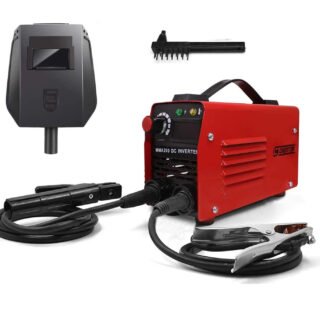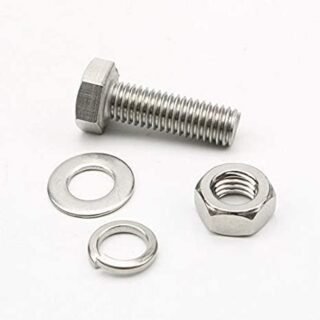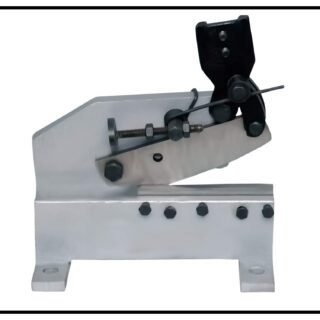Category
Sale
-
 Toolskart Hydraulic 16 Ton Wire Crimper Crimping Tool Plier kit with 11 Dies, Range 16 mm2 to 300 mm2
Toolskart Hydraulic 16 Ton Wire Crimper Crimping Tool Plier kit with 11 Dies, Range 16 mm2 to 300 mm2
₹5,999.00Original price was: ₹5,999.00.₹2,500.00Current price is: ₹2,500.00. (Price inc. 18% GST) -
 Cheston 200A Portable Inverter Auto ARC/MMA Stick Compact Welding Machine | IGBT Technology & Digital Display | Hot Start & Anti-Stick Function | With Accessories & Face Sheild
Cheston 200A Portable Inverter Auto ARC/MMA Stick Compact Welding Machine | IGBT Technology & Digital Display | Hot Start & Anti-Stick Function | With Accessories & Face Sheild
₹9,999.00Original price was: ₹9,999.00.₹5,599.00Current price is: ₹5,599.00. (Price inc. 18% GST) -
 Toolskart 20 Pcs Pack, M10 x 25mm Hex Head bolt With Nut & Washer, Zinc-Coated 10mm thickness and 25mm length
Toolskart 20 Pcs Pack, M10 x 25mm Hex Head bolt With Nut & Washer, Zinc-Coated 10mm thickness and 25mm length
₹1,734.00Original price was: ₹1,734.00.₹1,088.00Current price is: ₹1,088.00. (Price inc. 18% GST) -
 Breeze Shears 6 Inch Bench Shear, Hand Shearing Machine
Breeze Shears 6 Inch Bench Shear, Hand Shearing Machine
₹6,999.00Original price was: ₹6,999.00.₹3,999.00Current price is: ₹3,999.00. (Price inc. 18% GST)
Recent Posts
What’s the difference between a wrench and a spanner?
In India if you ask someone to bring a wrench or spanner he/she will bring exactly the opposite of what you will ask them. This is a major confusion. Wrenches and spanners are ultimately designed to do the same job – tightening or loosening nuts and bolts. While this can sometimes lead to confusion between them, they’re actually two separate tools with their own characteristics and specific uses. Both these tools have a similar purpose that is why people get confused so much. Below are the definitions of both the tools:
Wrench

In English, a wrench generally refers to adjustable wrenches, which have a moveable lower jaw to adjust to different size nuts and bolts. They’re great because one tool will cover a wide variety of different size fastenings in both metric and imperial – although there is still a minimum and maximum size to watch out for.
The downside, however, is that wrenches are typically quite bulky tools – especially around the jaws – which makes it difficult to use them in narrow spaces or for precision work, which is especially relevant when thinking about automotive jobs. Because they aren’t size-specific, there’s also arguably more risk of rounding the fastening, which can lead to frustration and cost of replacement. There is also one specific kind of wrench which is called a Pipe Wrench. That is solely used for the purpose of plumbing.

Spanner

Spanners are size-specific. The most common is the combination spanner, which has a closed – ‘box’ – end and an open end to help with different access points, although there are a wide variety of different types such as double box or offset spanners.
The head is slimmer, meaning that it’s easier to fit into narrower spaces and the size-specific nature lessens the risk of rounding. If you know which size you require, then you’ll get the job done quicker as you don’t have to adjust the tool each time, and there is a certain satisfaction from using the ‘right tool for the job’.
So why the confusion?
Aside from having very similar purposes, there’s the fact that the terminology for these tools is different in UK English and American English. American English speakers use ‘wrench’ as an all-encompassing term for both wrenches and spanners, while UK English speakers distinguish between ‘wrenches’ and ‘spanners’ as described above. While Indians usually refer to either as “पाना” and “नापनेवाला”, which itself means to measure.
To learn more about different tools and machinery you can visit the below website www.toolskart.in


Leave a Reply